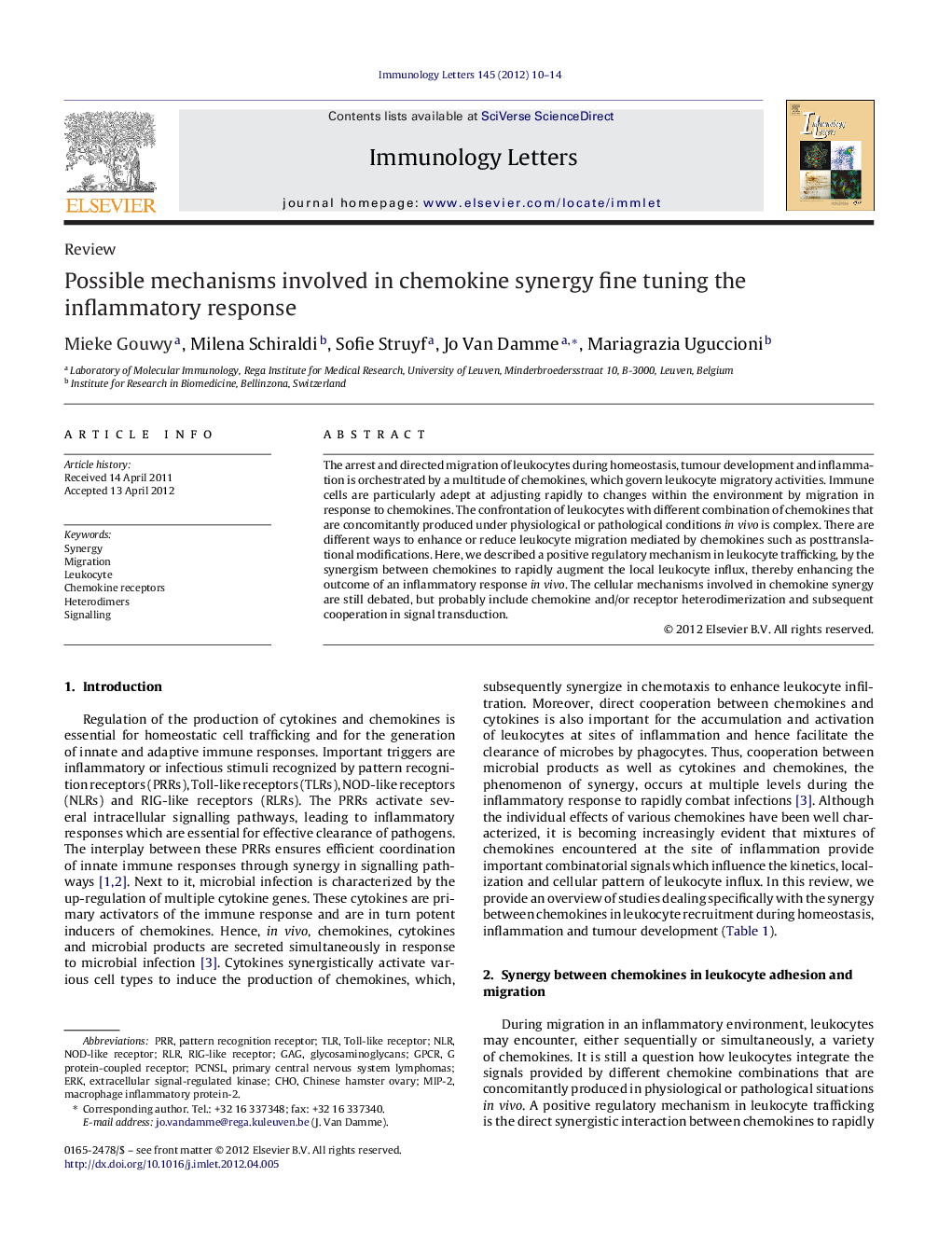| Article ID | Journal | Published Year | Pages | File Type |
|---|---|---|---|---|
| 3355587 | Immunology Letters | 2012 | 5 Pages |
The arrest and directed migration of leukocytes during homeostasis, tumour development and inflammation is orchestrated by a multitude of chemokines, which govern leukocyte migratory activities. Immune cells are particularly adept at adjusting rapidly to changes within the environment by migration in response to chemokines. The confrontation of leukocytes with different combination of chemokines that are concomitantly produced under physiological or pathological conditions in vivo is complex. There are different ways to enhance or reduce leukocyte migration mediated by chemokines such as posttranslational modifications. Here, we described a positive regulatory mechanism in leukocyte trafficking, by the synergism between chemokines to rapidly augment the local leukocyte influx, thereby enhancing the outcome of an inflammatory response in vivo. The cellular mechanisms involved in chemokine synergy are still debated, but probably include chemokine and/or receptor heterodimerization and subsequent cooperation in signal transduction.
► Synergy between chemokines in leukocyte migration. ► Involve chemokine/receptor heterocomplexes, dual receptor usage and cooperation in signalling. ► Synergistic chemokine interactions play a role in physiological or pathological processes.
